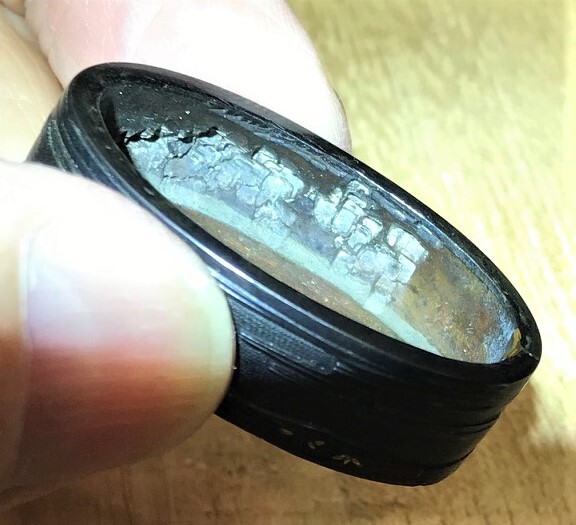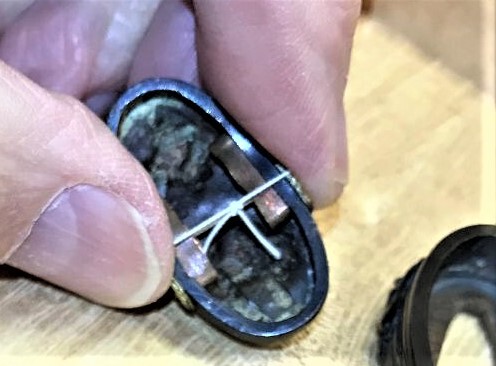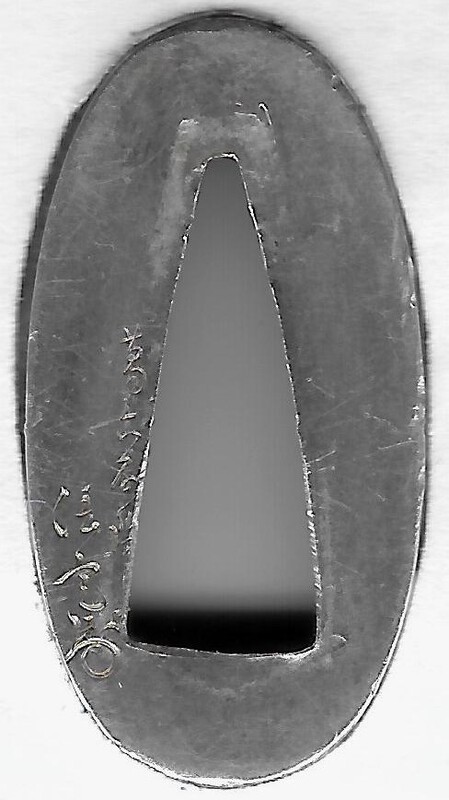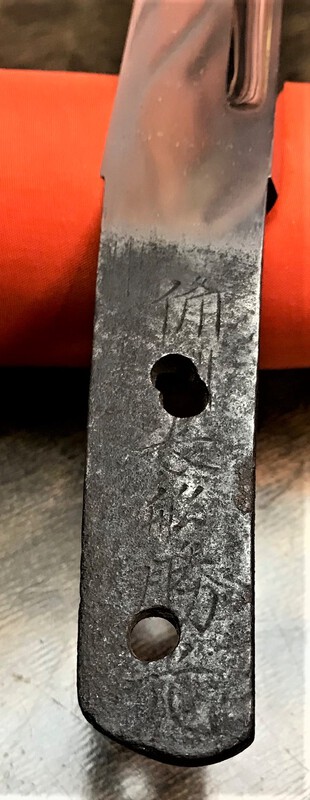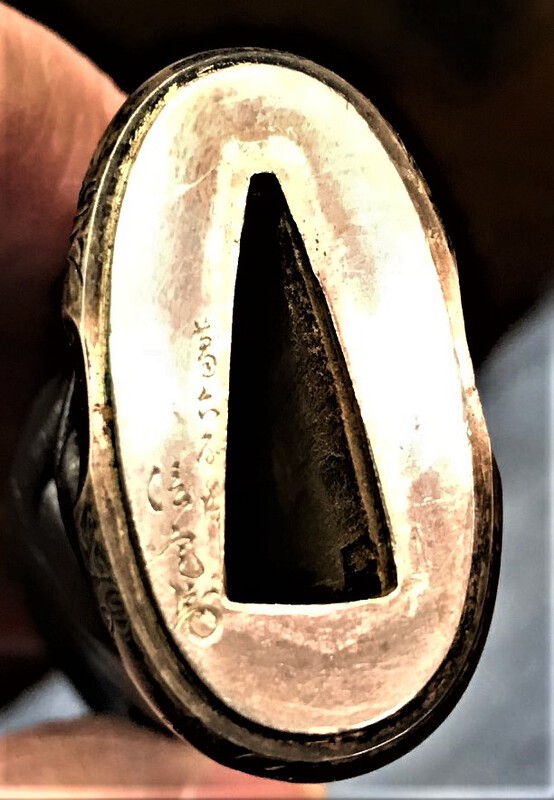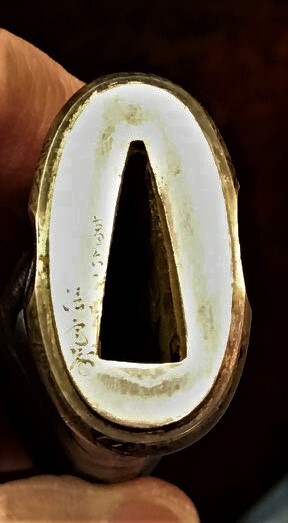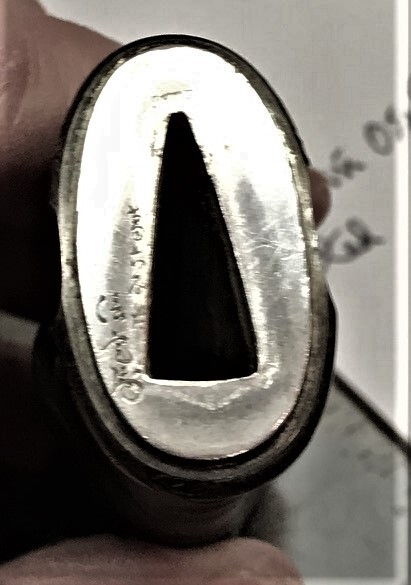-
Posts
703 -
Joined
-
Last visited
-
Days Won
4
Content Type
Profiles
Forums
Events
Store
Downloads
Gallery
Everything posted by Ron STL
-
Thanks. I was confused by the kanji for "early." Also, what are those two kanji following Muromachi? I've always found it difficult (impossible) to find a book that shows the kanji for early, mid, late in this form of kanji. I try and file this info away for future use but often it gets lost. Ron STL
-
-
Well, I'm also impressed. I thought we were at a dead end on this topic. Thanks for going through the effort of figuring this out. Much appreciated! It seems like very few people, anywhere, can figure out the writing form. Interesting that poets and scholars used this art form of writing. Ron STL
-
Thanks for the effort, Steve. It seems few people, even in Japan, have the knowledge to read and understand this script. As I mentioned, this kozuka belongs to a local friend we were simply trying to understand more about it. Marcus Sesko has publication available on understanding cursive based on how radical look when written this way, but I certainly do not need to buy a copy. I still sruggle using Nelson's. Ron STL
-
Hi Folks, Here is an interesting kozuka owned by a friend with a saying or something written in cursive script. We have been unable to make any headway towards understanding that it says. If anyone out there can understand and read what's written on this kozuka, that would be so interesting to us and possibly to the others reading this. Ron STL
-
Thanks guys, this gives me some direction to work on. Ron STL
-
Back to the Nara f/k set, does anyone have a good feeling for about when this set would date from? They look to be relatively early, especially the theme we see, but could that be early Edo? Just showing my lack of knowledge when it comes to Nara work outside of the sansaku makers. Ron STL
-
Is there a thorough article in English somewhere that explains works that fall into Owari kinko works? Ron STL
-
The video is impressive, the first time I've seen uchidashi being performed. That was what the Goto artists used I believe. So seeing this used with this fuchi kashira set by the Nara is quite possible. I've always been fascinated by menuki and f/k because of their typically small size and great detail found on them. Thanks for pointing out the Ford video. I haven't thought about his videos for a long time and really need to spend more time with them. Richard, isn't your tsuba iron? Ron STL
-
While looking at a fuchi kashira set that I've owed for a number of years, NBTHK to "Nara," I was examining how they were made. Not noticed before, both pieces show deep punching on their backs. This would show they were punched into a mold from the back, something that surprised me. I've enjoyed the motif used on Nara work, often being very "thought provoking" I suppose, but made using repose' technique? Never thought about that before. I only have a very few Nara examples in my collection and only this one set of kinko. I'm wondering if anyone can shine some light on their technique used when producing kinko f/k and menuki. The attached photos pretty well show this almost bold, punching marks on the pieces. Ron STL
-
Looks like a beautiful sword. The exceptionlly long sayagaki by Tanobe san cries translation. He must have liked it very much. Ron STL
-

Lovely silver mounted tanto, help on mei please.
Ron STL replied to Ron STL's topic in Translation Assistance
Appreciate the attempt to translate, Steve. I'll just not worry about who the maker was. One day somebody will make a computer program to "face recognize" the many kao on such fittings. That too, sounds impossible but then I'm a dinosaur when it comes to such technology. Ron STL -

Lovely silver mounted tanto, help on mei please.
Ron STL replied to Ron STL's topic in Translation Assistance
I have tried a scan of the fuchi to clarify the signature, and it appears to be as clear as it is possible. I'll attach a copy of this scan in hopes that it will help identify the carver. I believe you're referring to the two kanji - Kiyo... - above the kao, correct? Let's see how it goes. Thanks to helping out here. That script is beyond me. Ron STL -
Hojoji Sadahiro looks like a very nice sword. Nice to see such a minty nakago and mei. A bt short for a hirazukuri but can see a lot to be enjoyed here. Ron STL
-

Lovely silver mounted tanto, help on mei please.
Ron STL replied to Ron STL's topic in Translation Assistance
-

Lovely silver mounted tanto, help on mei please.
Ron STL replied to Ron STL's topic in Translation Assistance
I tried a couple times to post some pictures of the tanto today, but kept running into a problem completing the post. I'll send a few photos here and the the otherf few with a separate post. As for the rating, I'm pretty sure i checked that "Josaku" rating in Fujishiro and not just in the translation volumn. This Katsumitsu apparently is not one of the family (generations) but a branch member. Still trying to convince myself of the details. Comments welcomed. Ron STL -

Lovely silver mounted tanto, help on mei please.
Ron STL replied to Ron STL's topic in Translation Assistance
-
Looking at a very pleasantly mounted tanto that may soon reside here. No pictues of the koshira at the moment, but did snap a shot of the signed fuchi. Signed in grass writing, I am lost trying to read it. Anybody out there able to read this mei? Nice kao might help. The tanto is signed/dated to Bizen Katsumitsu, 1521. A Jo saku rated smith. Three previous Katsumitsu are rated Saijo, to my surprise. Just a pleasant "package" that needs a new keeper for awhile. Thanks for any info on the maker. Ron STL
-
Thanks very much for the reading of this mei. When comparing it with the kanji, it is now clear to me. Too bad the yari isen't as perfect as the dealer site yari. The date on mine seems not all there, or not readable at least. The date period is simply too indistict and all that I can make out is ni-gatsu Kitsu Jitsu. Satsuma Kuniari worked around 1780s so that's good enough for my file. While the polish is definitely not in the best condition, I am impressed with the abundant ko-nei hataraki the the appearance of some chikei in the jigane that the yari displays. I hope to learn more about Kuniari's works as time goes on. Ron STL
-
Here is a well forged and interesting kikuchi yari that I am trying to understand. It is apparently signed and dated, but I can not get a foot-hold on what can be seen to even begin to read what's on the nakago. Bits and pieces perhaps, but not enough to go on. I'll post some picture shot a various lighting angles in hopes enough can be seen for somebody with language skills to read, even it partially. The yari is typically shortened, but has a base made in typical yari fashion as opposed to kikuchi form to fit a habaki. Anybody care to comment on what can be seen on its nakago? Lovely little yari. Amazing how little information can be found dealing with placing an age on these yari. Being dated, I would think that would be good to add to our knowledge bank..."if" this info can be translated. Ron STL
-
Arnold and I initially met sometime around 1970-72, when others here first discovered where to find information on swords and fittings. (Peter Bleed was one of those early names to be seen in the JSS/US publications.} The JSS/US will be having a complete newsletter in remembrance of Arnold, reprinting a number of his written articles published over the years. God Bless, old friend. Ron STL
-
Years ago I was told to not clean any sword fitting aggressively. Focusing on menuki, a gently bath using a "worn" toothbrush and body soap. A little cleaning and a quick rinse in warm water will not attack the age shown on the backside of menuki. I well remember soaking a pair of shakudo menuki is a solution of laundry detergent and leaving them sit for an hour or so, returning to find to very bright coppery colored menuki. First lesson learned! (ouch) Ron STL
-
This topic brought to mind a very fine daito here, signed niji mei, Yoshichika. Years ago when purchased, I was puzzled by its rather straight shape since it appeared quite old, but...so straight? I recall Cary Condell liking it and pushed it quite early, as did Dean Hartley. I finally sent it to NBTHK and it went Tokubetsu Hozon. The origami noted: unlisted smith, Nambokucho. Mr. Tanobe later explained it was made by an unlisted country (inaba) smith in Yamato fashion, which may explain the puzzle about shape, at least to me. Another occasion later on, asked about submitting a beautiful sword by Shinto shodai Chikuzen. The nakago carried his "rare form" of signature as mentioned in Sword and Same' and other places. Tanobe advised that they (NBTHK) would not paper this because they have no confirmed examples of this form of mei. Years later, I submitted it through the NTHK(NPO) and they did issue an origami as shodai Yoshimasa. As for the NBTHK, I believe the age -- one being Nambokucho, the other Shinto -- had something to do with their decision on both swords. All interesting experiences when collecting swords. Ron STL
-
Thanks guys, this clarifies exactly what the judges wrote. This a very well made pair of menuki which I've always enjoyed. I knew the thickness of the plate was a factor. Purchased these decades ago from George Phebus, now long gone. Again, thanks for the help. Ron STL
-
Looking at an NTHK paper from 1984 given for a pair of menuki. A note to myself on the worksheet says "ko-Mino copy" which today, I don't see this on the paper. I think the paper is saying these menuki are late Edo Mino menuki. I see (?) dai Mino saku and also Edo jidai (?) (?). What are this (?) kanji??? These menuki are lovely and do look like ko-Mino except they the plate is too thick and they lack the depth that you see on ko-Mino. That said, I'd just like to understand these kanji and what they are saying. Explanation anyone? Thanks Ron STL


.jpg.45280a1d569847b4634aa1216212a29d.jpg)



